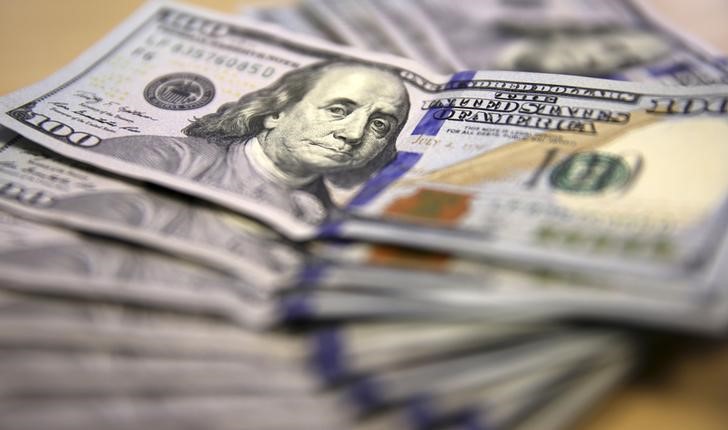* April Fed minutes raise prospect of June hike
* Japanese exporters' offers may temper dollar/yen rise (New throughout after start of London trade)
By Patrick Graham
LONDON, May 19 (Reuters) - The dollar steadied just off its highest since March in European trade on Thursday after a perceived increase in chances of a rise in U.S. interest rates by September drove its biggest daily gain in five weeks.
Stronger data, rhetoric from the Federal Reserve and a resulting shift on money markets has revived expectations among hedge funds of a new rally for the U.S. currency, which came within sight of parity with the euro a year ago.
Yet in a U.S. election year, with markets suspicious that politics played a role in a slide since February, caution abounds.
Many speculative players have been disappointed over the past year by the U.S. currency's failure to rise and the most recent data from last week shows the market overall now betting net on a weaker dollar.
"A lot of investors even today still want to keep the long dollar position in the portfolio. The reason is still simple: the monetary policy gap is there but a lot of people have been hurt," said James Kwok, head of currency management at French asset managers Amundi.
He has been cautious of backing the dollar strongly against other major currencies, preferring to back it against Asian currencies including China's yuan, the Singapore dollar and Korean won.
"We think the dollar will continue to go up, but it will not be broad-based any more," he said.
"It will not be against most of the currencies that people expect, not against the currencies whose central banks have tried hard to weaken through QE, negative rates and so on. You can see how dangerous it has become to bet against the yen."
After reaching a high of $1.1206 at the start of European trading, the dollar was steady on the day at $1.1220 EUR= and up 0.1 percent against the basket of currencies that measures its broader strength. .DXY
It inched lower to 110.085 yen but was up by as much as a third of a percent against the Canadian and New Zealand dollars. CAD= NZD=
While the U.S. dollar could see further gains against the yen in the near term, the pace is likely to become more gradual given the potential for dollar-selling by Japanese exporters, said a trader for a Japanese bank in Tokyo.
"There is no doubt that the levels are becoming attractive for exporters to conduct some currency hedging," he said.
The dollar's rebound against the yen no doubt came as a relief to Japanese officials, who were concerned that the yen's recent strength would stifle Japan's nascent economic recovery.
A number of major Japanese exporters have set their dollar/yen exchange rate assumptions for the 2016/17 business year, which began in April, at levels around 110 yen to 105 yen.
Among them are major car makers Toyota Motor Corp 7203.T and Honda Motor Co 7267.T , which are both assuming an average dollar rate of 105 yen in 2016/17. are likely to be a topic at the G7 finance leaders' meeting in Sendai, northern Japan on Friday and Saturday. The meeting could expose a rift on issues ranging from currency to fiscal policies within the group of advanced economies. officials have warned regularly of "one-sided" moves in the yen, but most analysts believe U.S. opposition will prevent them intervening against the currency.
"I would expect Japan to seek understanding of their FX and monetary policy. However 'dissent' from the U.S. on FX intervention will still remain," said Roy Teo, senior FX strategist for ABN AMRO (AS:ABNd) Bank in Singapore.
